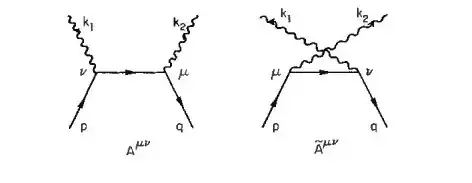In his book, the author says that according to 
the Feynman diagrams of this process in QED $$e^+ e^- \rightarrow \gamma \gamma,$$ gauge invariance requires that $$k_{1\nu}(A^{\mu\nu} + \tilde{A}^{\mu\nu})=0=k_{2\mu}(A^{\mu\nu} + \tilde{A}^{\mu\nu}).$$ My question is how does gauge invariance set this statement equal to zero?